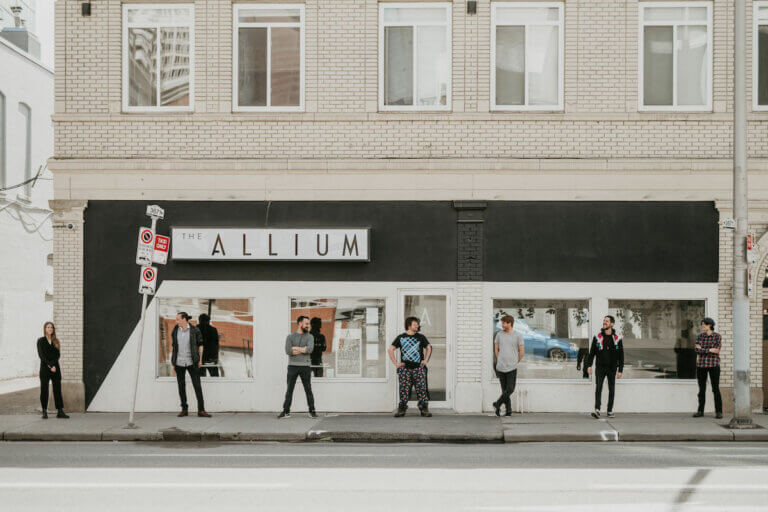In an industry struggling to generate revenue, compete for attention and hold on to subscribers, independent media outlets face a tough challenge. From funding models to building a brand from the ground up, it can be an uphill battle in an already fickle and ever-changing news landscape.
At toast, we’re investigating what makes some of the country’s smaller, independent news outlets tick – finding out how they got started and how they deliver quality stories to readers. We recently spoke to The Narwhal, a non-profit journalism organization that proves people will pay for quality environmental reporting. Next we’re featuring local news outfit LiveWire Calgary.
What is LiveWire Calgary?
After a restructuring at Metro Calgary left veteran journalist Darren Krause out of work, he focused efforts on imagining a newsroom that would keep in-depth local stories a priority. In 2018, that vision became LiveWire Calgary, an independent publication that provides daily and long-form journalism about the politics, lifestyle and unique issues that impact the city. Here, Darren tells toast about his path, and the vital contribution that independent outlets make to the journalism world.
What was the original vision and mission of LiveWire Calgary, and how did it get off the ground?
LiveWire’s DNA comes from my days as the managing editor of the Metro Calgary newspaper. There, we focused on delivering local, ground-level news. We really wanted to have the feel of a community weekly paper, with the journalistic punch of a daily newspaper. We also remained as objective and fulsome in our reporting as we possibly could. When Metro (Torstar) and I parted ways, they abandoned that approach, despite the fact that we were the most-read newspaper in the city, and the most profitable in the Metro English Canada chain.
After leaving Metro, I knew I wanted to continue delivering that kind of news to Calgary. Since the new Star Metro abandoned that in favour of traditional 35,000-foot news that everyone else was covering – but from an uber-progressive viewpoint – there was a gap. That was that gap I was going to fill. My time at Metro essentially provided the blueprint for a successful daily news product.
What is LiveWire’s funding structure, and how did you decide on and grow that structure?
LiveWire Calgary has a hybrid approach to revenue generation. Only so many readers are willing to part with their cash as members, so in order to supplement our membership, we do have advertising opportunities on the website and with our newsletter and podcast products. We switched up our advertising model so that no ads appeared in the middle of stories, in order to make sure the reader experience was improved.
Growing the membership has been an uphill climb. The adage “membership has its privileges” holds true. Members want more access; that’s a fair proposition. Where it collides with our mandate is in access to information. We’re ardently opposed to paywalls because we believe the public is stronger with more quality information, and if you paywall it, fewer people have access. So, we’ve had to become more creative in the added value we deliver to members. It’s extra work, but I think we’re getting to the point where we’re able to tie it in with our regular workflow.

Related Articles
It’s a tough landscape right now for journalism in general, including independent, non-profit, and/or investigative journalism. What are your thoughts on the future of this type of journalism? Where do you think it’s going?
I think the future has never been brighter for independent journalism. It’s still very young in Canada, but there’s an immense amount of value because they aren’t beholden to a “head office” mandate for coverage style. Independents can literally tackle things in whatever way the story takes them. That provides a richness that the mainstream media can’t always provide.
They’re still stuck in the rut of providing news in the same old-fashioned way that came about with the Gutenberg press. Some of their editors are that old, too. Very few – unless you’re the Washington Post or the New York Times or other big outlets – are really pushing the boundaries in news generation and delivery. It’s quite cliché, but I do believe the sky is the limit for independents.
What keeps the LiveWire Calgary team going in these difficult, sometimes disheartening times in the industry? What gives you hope?
What gives me hope is I believe there will be a tipping point where readers, in search of quality answers to sometimes complex questions, will see the huge value in finding, then supporting, quality information. We’re in a hyper post-truth era, but that pendulum is swinging back. Mainstream media just isn’t in a position to adapt quickly and that will ultimately be their downfall.
Any advice for other independent and/or smaller outlets?
Stay true to your core readers. They’re the ones that will be with you through all the highs and lows and the mistakes of starting your own venture. Don’t be tempted by the lure of quick success, because it’s weak and unsustainable.
Always, always, always be writing for the reader. Journalists often get this picture in their head of an important topic or story, when no one actually cares as much as they do. Journalists are terrible for that. Take the time to find out what your readers want, then do a bang-up job giving that to them.
Next up: find out how the West End Phoenix built a community around a newspaper.
*Some responses may have been edited for length and clarity.







